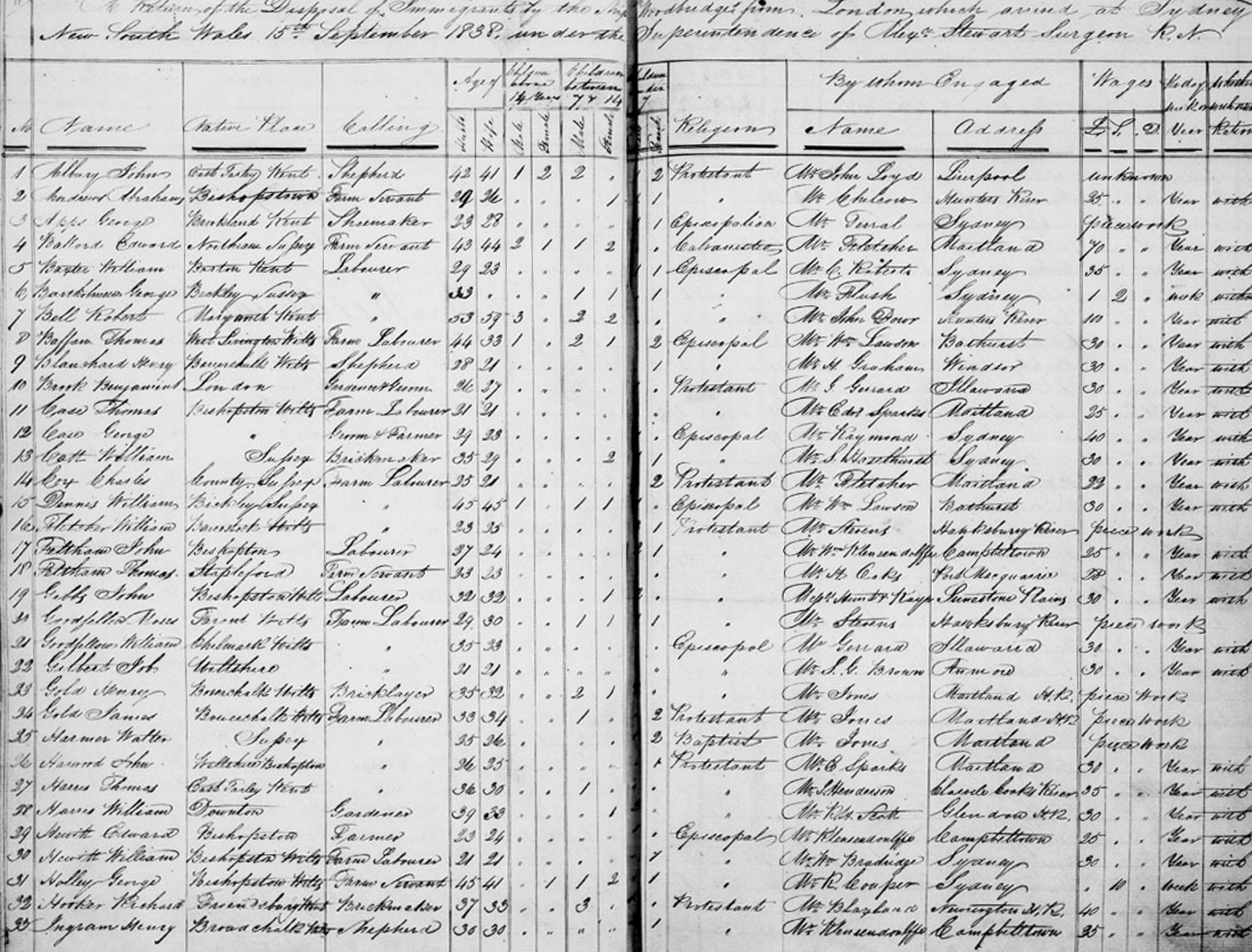German migration stories
Background to German migration
A number of Germans, such as Augustus Alt (appointed the first Surveyor of Lands on May 1787), the astronomer Carl Ludwig Rümker and Phillip Schaffer who established one of the earliest vineyards in Australia, played key roles in the early development of New South Wales. In 1837 the Macarthur family engaged six German winegrowers to work on their property at Camden. This group and their families arrived in Sydney in April 1838. However, they were a minority as few Germans settled in the Colony in the early part of the nineteenth century.
The first 'assisted immigrants' (predominately British) began arriving as early as 1828 but it was not until 1847 that the Colonial Government widened the scheme to include European workers with special skills, such as vine dressing and carpentry.
Significant numbers of Germans then began migrating to NSW and by 1856 the number of German-born immigrants in the colony had risen to 5,245. German immigration peaked in the 1880s and early 1890s and at the census in 1891 the figure had increased to 9, 565.1
There were large German settlements in towns such as Albury, Grafton, Tenterfield, Armidale, Bega and Temora. It has been estimated that as many as 15% of Germans living in rural districts were located on the goldfields near Young and Uralla (Rocky River) with smaller settlements at Araluen, Bingara, Tumut and Cooma.2
Internment and ‘alien’ registration
While German settlers were generally absorbed into the rest of the population, the outbreak of World War I generated considerable anti-German sentiment. Towns with 'German-sounding' names adopted new names — for example Germanton became known as Holbrook.
The government also introduced a number of measures. German subjects in Australia were required to report to their nearest police station (government proclamation issued on 10 August 1914) and the War Precautions Act 1914 provided that citizens of enemy countries could be interned for the period of the war.3
During World War II the National Security Act 1939 provided for the internment of enemy aliens.
There were internment camps at Liverpool, Orange, Cowra and Hay. Internees included 'enemy aliens' (especially Germans and Italians), naturalised and Australian born persons of enemy alien descent, enemy aliens arrested overseas and transferred to Australia and prisoners of war transferred to Australia.4
Immigration records

Immigration & shipping guide
Key records and indexes for passengers arriving in New South Wales 1788-1922

Assisted immigrants digitised shipping lists 1828-1896
If you know the ship your assisted passengers arrived on you can search, view & download the digitised shipping list
Records relating to internment
Series | Title | Dates |
|---|---|---|
NRS 7746 [3/9574 pt] | Notebooks: Internees (re complaints from German Concentration Camps in New South Wales) [Chief Justice P. W. Street] | 1916 |
NRS 1882 [3/3198] | Correspondence and other papers relating to internees | 1939-1941 |
NRS 1883 [3/3199] | Disposal register of internees | 1939-1941 |
NRS 1884 [3/3200] | Journal of surgeon visiting internees | 1939-1941 |
NRS 1885 [3/3201] | Internees’ visitors book | 1939-1941 |
NRS 1886 [3/3202 pt] | Internees’ requests book | 1939-1941 |
NRS 1887 [3/3202 pt] | Register of letters sent and received by internees | 1939-1941 |
NRS 2014 [5/1523] | Bathurst Internment Entrance and disposal book | 1939 |
NRS 6191 [3/6248 pt] | Internment Camps, Hay, Orange, Cowra and Liverpool | 1940-1943 |
NRS 3248 [7/1456.1] | Newcastle Court of Petty Sessions, Files relating to the naturalization of aliens | 1939-1954 |
Other sources
The records of the Attorney General, in particular NRS-313, Letters received, 1911-1956, the Colonial Secretary’s Correspondence and Special Bundle listings as well as the Premier’s Department Special Bundle lists should also be consulted.
Records relating to Germans
Series | Title | Dates |
|---|---|---|
Colonial Secretary: Special Bundles - Complaints of foreign immigrants on voyage — Germans on the Marbs and Aurora. Bill to regulate foreign immigration, 1855–56, [4/7170] This bundle contains material that relates to complaints by the German passengers who arrived at Moreton Bay (Queensland) on the Marbs and the Aurora in March 1855. | 1855-1856 |
Footnotes
1. Australian Encyclopaedia, Sydney, Angus and Robertson, 1958, p 286
2. Geoffrey Burkhardt and Nola Mackey, History of the German Community in the Clarence River District of NSW, Grafton Family History Centre, Grafton, 1999, p.17.
3. National Archives of Australia, Fact Sheet 17: WW I internee, alien and POW records held in Sydney, 2000
4. National Archives of Australia, Fact Sheet 101: World War II internee, alien and POW records held in Sydney.